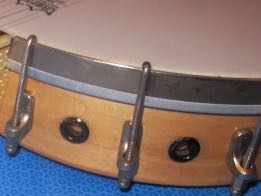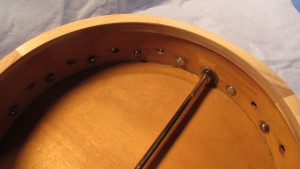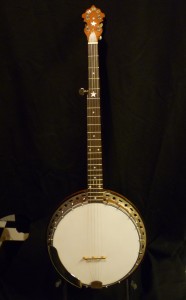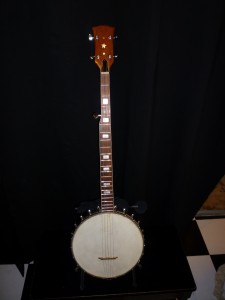During the mid 19th century, troupes of minstrel show musicians toured England igniting a craze in Britain for America`s homespun music and its signature banjo. In 1859, Stephen Van Hagen of Albany, NY, patented a 7 string banjo- the very first patent of its kind. Alfred D. Cammeyer, a Brooklyn born composer and entrepreneur, relocated from the US to London in 1888 to cultivate the profitable banjo market there. At the end of the century, banjo sales remained a fertile business in the UK. The colossal musical instrument company owned John H. Buckbee of NY manufactured banjo parts that were shipped to London to be assembled and sold by the English distributor Joseph Wallis.
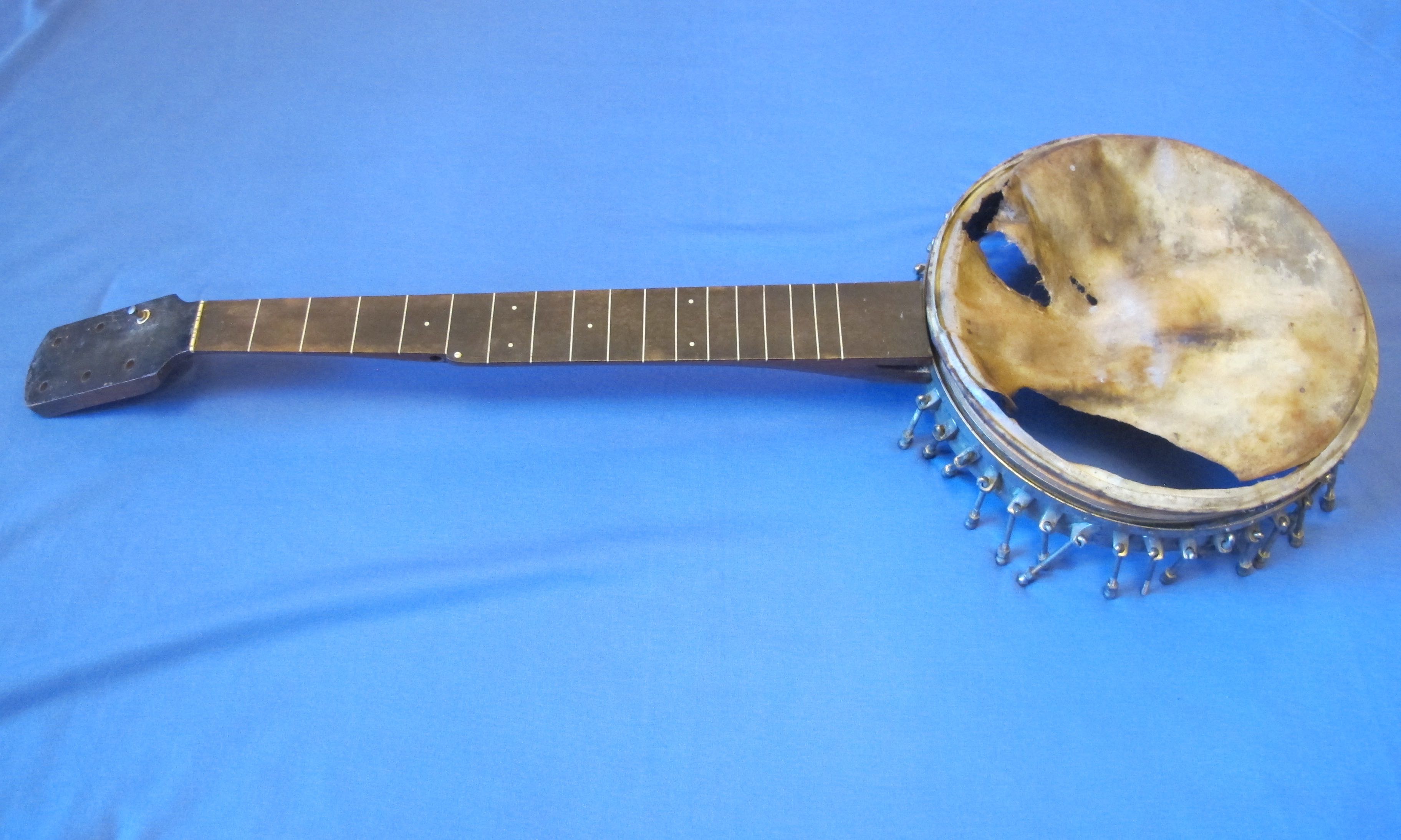
A forlorn Buckbee/Wallis 7 string banjo was recently discovered in a small antique store in rural Missouri by a guitarist who brought it to our workshop for restoration as guided by a recent article about the BRC in a local newspaper. 
The instrument`s “J.H.B.” initials imprinted on the heel of the neck confirm that the parts were manufactured in NY by J. H. Buckbee.
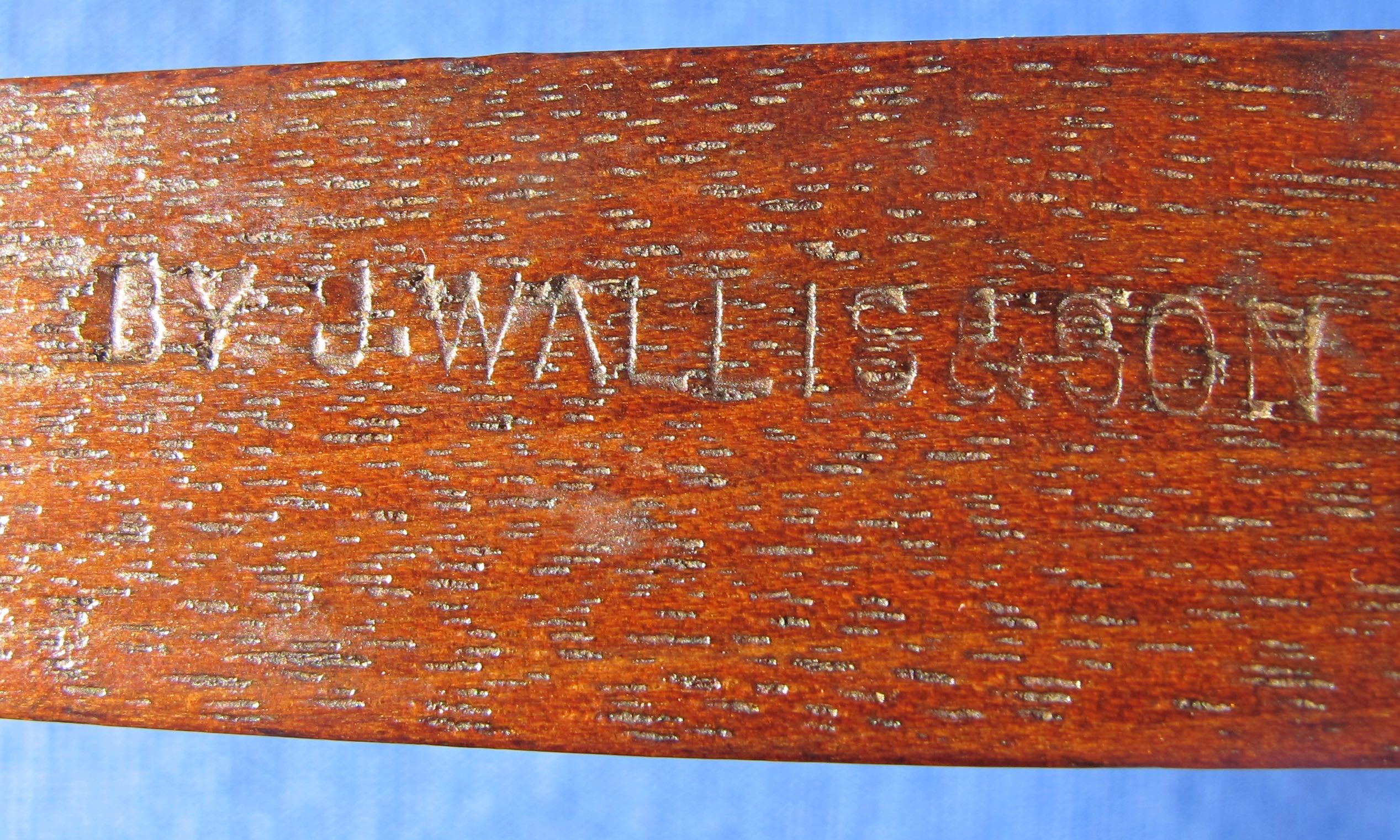
The “Guaranteed American By… Wallis ” inscription on the dowel stick assured the buyer in London that the banjo was a genuine product of the USA- birthplace of the minstrel tradition.
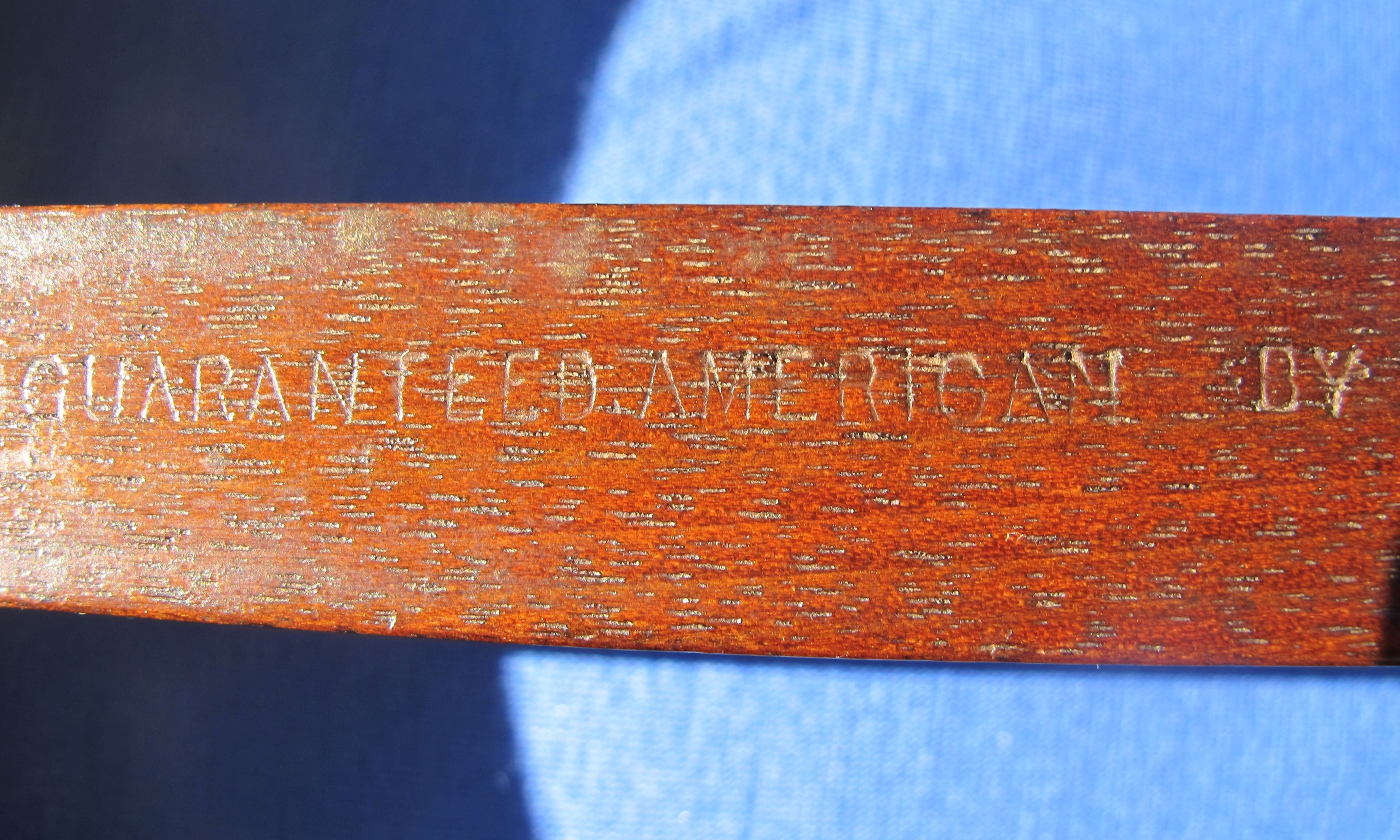
Buckbee died in 1897, and his business effects were publicly sold. Wallis & Sons were still listed as musical instrument makers in 1915.
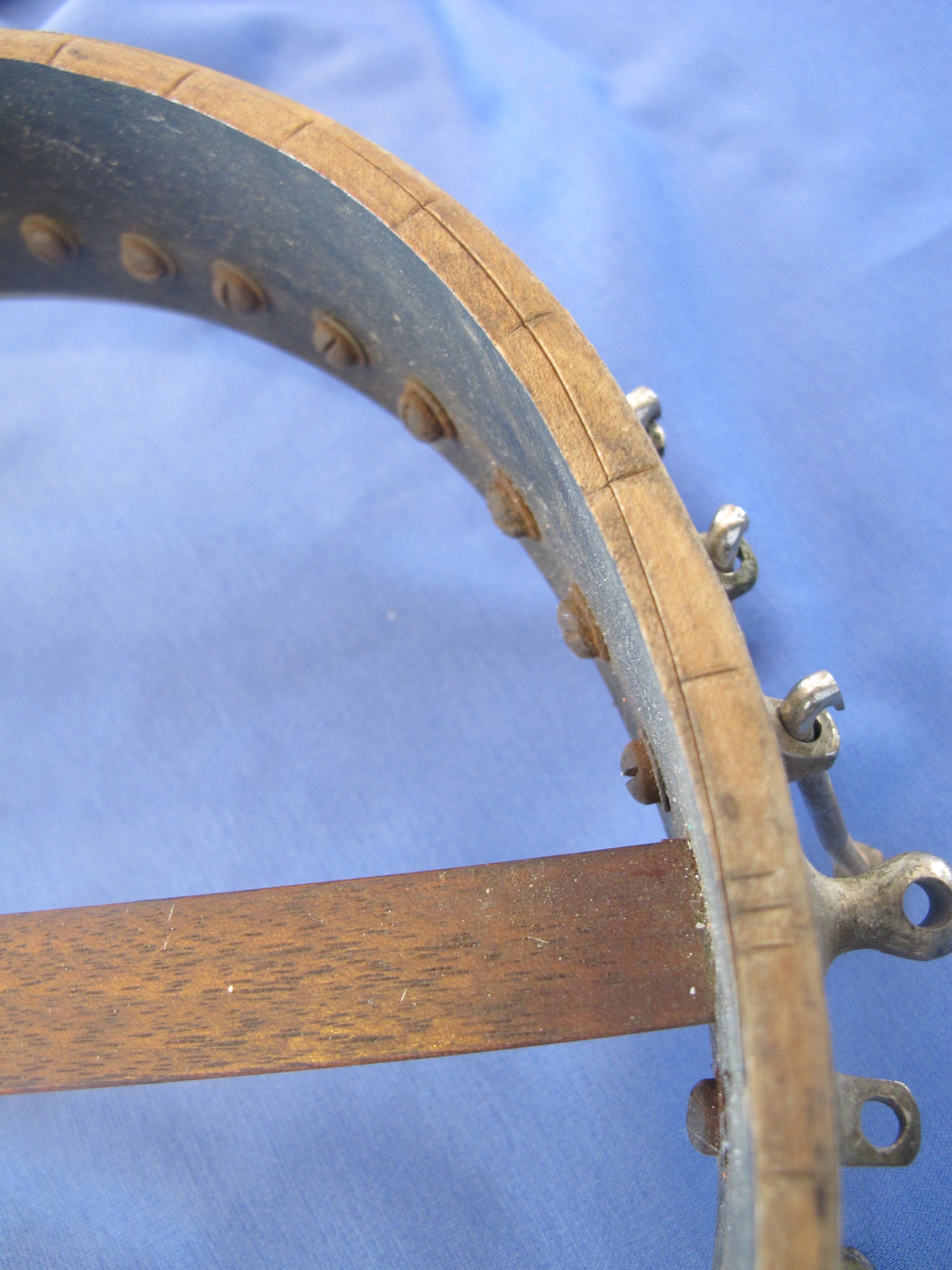
Clad in a rim of German silver, the spun-over pot interior was fashioned from a single bent piece of wood- a lost art form. After a clean-up, the original craftsman`s single marks for bracket positions and triple marks for dowel stick alignment remain visible as well as the overlapping seam of the wood rim.
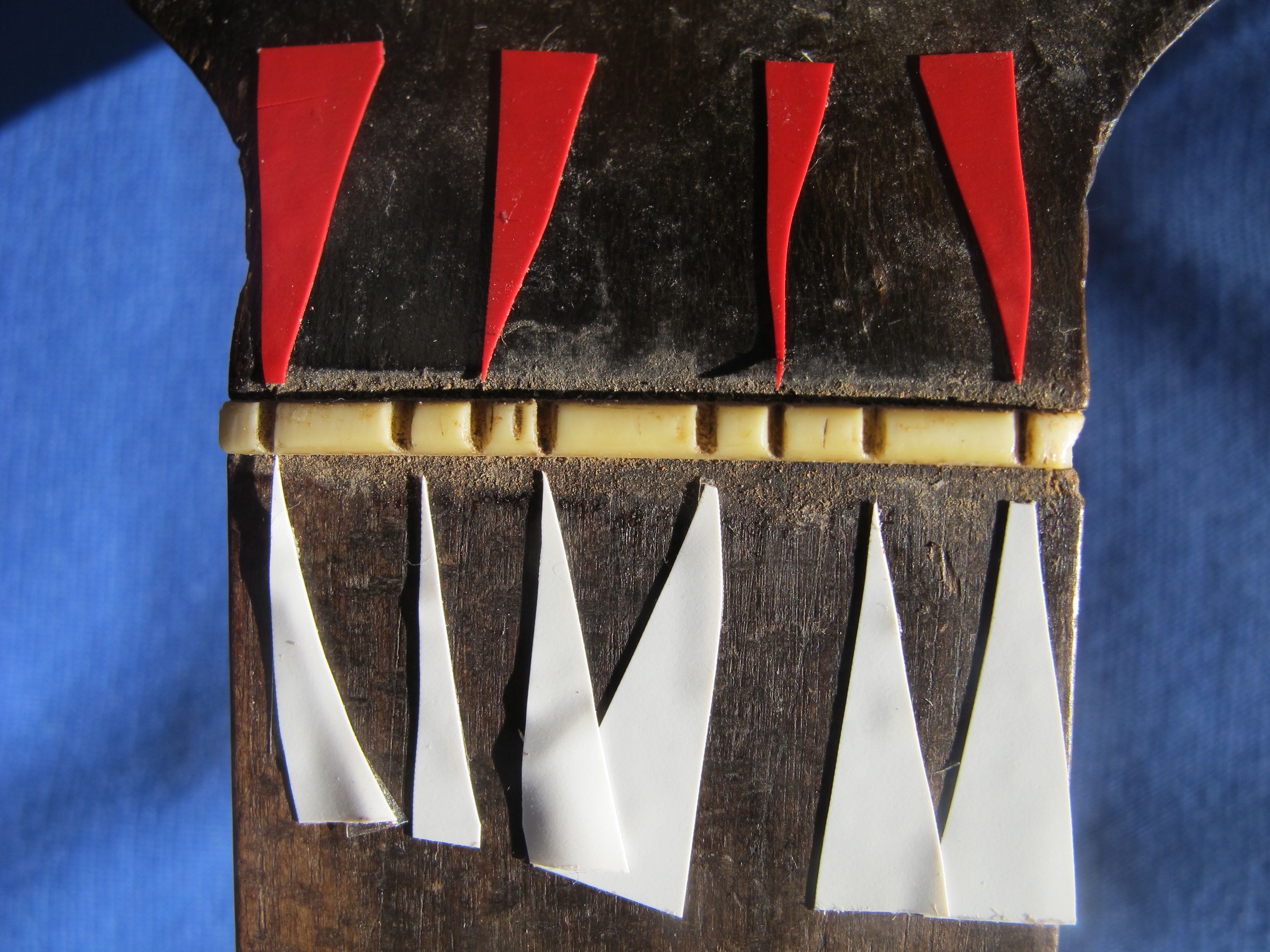
A close-up study of the crusty nut reveals multiple string slots. The BRC founder`s theory is that the instrument was initially built for 7 strings (white arrows) in NY and then shipped overseas to London and sold. After the banjo made its return transatlantic journey back to the the United States, it was then converted to a five string (red arrows) instrument more familiar to the American musician.
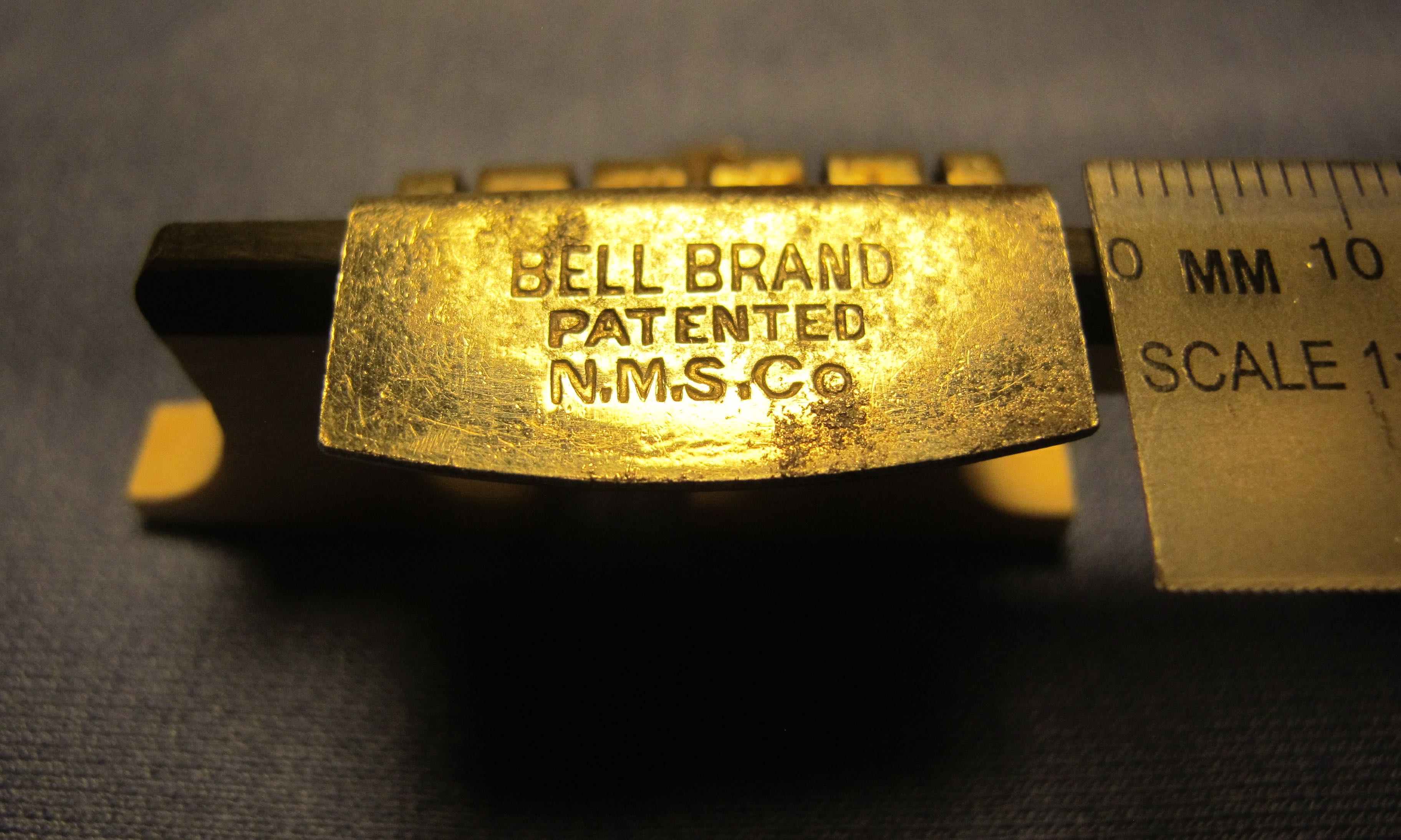
Following our restoration of the instrument, an antique Bell Brand tailpiece was applied to anchor nylon strings. Thomas Nelson Jr. owned the Bell Brand string franchise which he merged with two other manufacturers in 1897 to form the National Musical String Company (NMSCo.). In its day, this conglomerate was the largest manufacturer of steel strings in the world, and the original factory of the now defunct enterprise still stands in North Brunswick, NJ, as a National Historic Place.
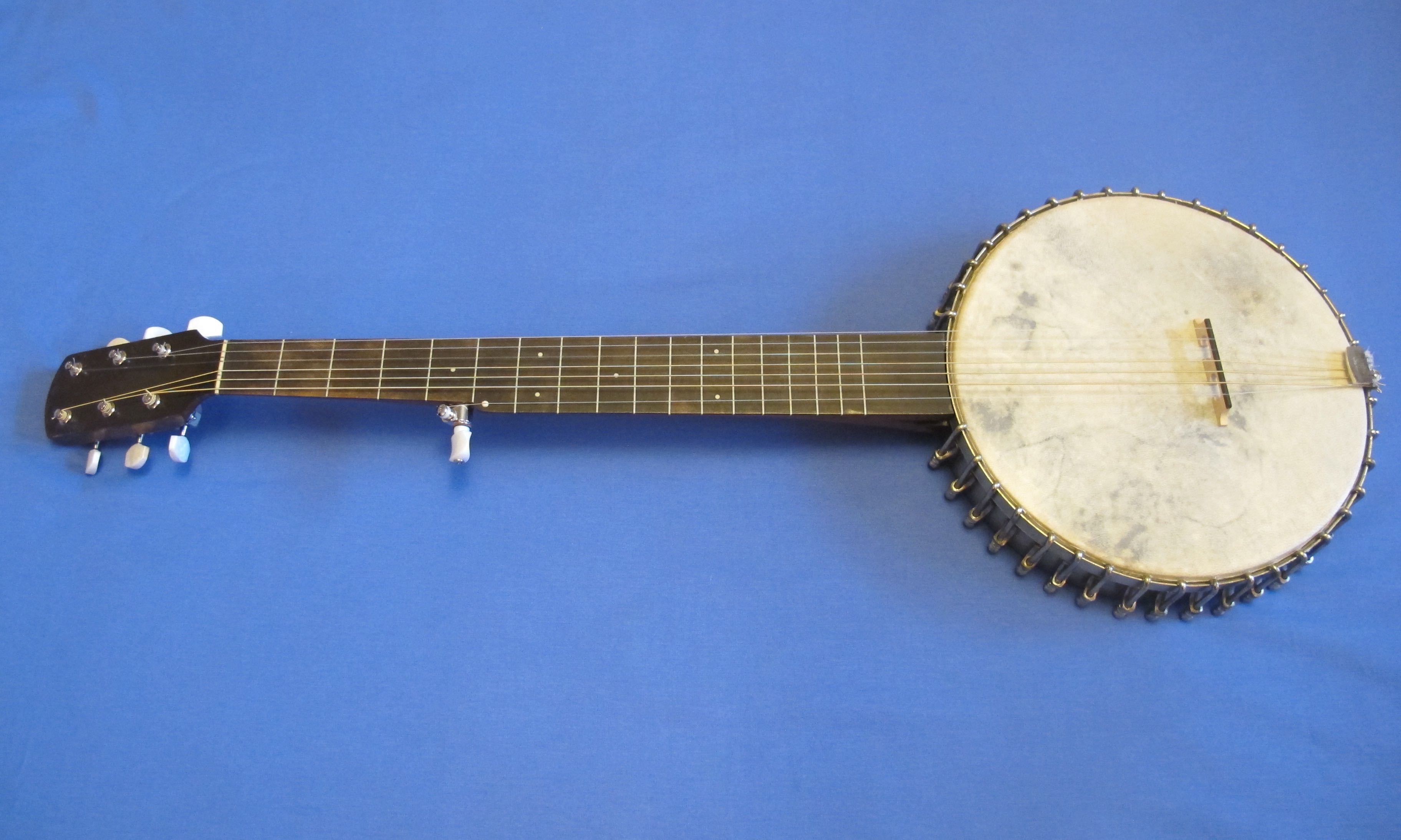
The banjo neck has a unique `flush fret` series of markers supplementing its traditional fretless fingerboard, and these stripes aid the musician in proper fingertip position. A new goatskin head was applied as well as non traditional pancake outrigger geared tuning pegs. The most common tuning for this rare bird 7 stringer is: gGcdgbd. The guitarist who brought this precious 120 year old banjo to us has graciously donated it to the BRC Collection where it will be treasured.
From the BRC: Our workshop staff wonders if the number 7 is a lucky digit for the BRC, as our website search engine stats just surpassed 700K hits, and we are grateful for this milestone .

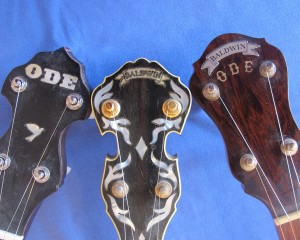
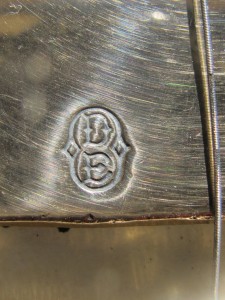
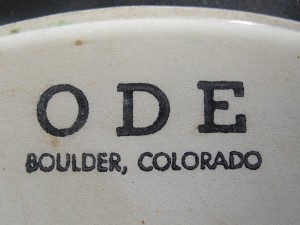
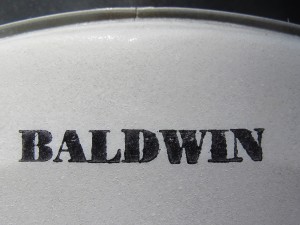
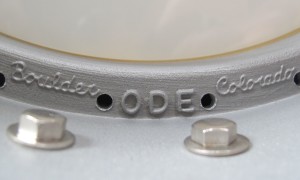
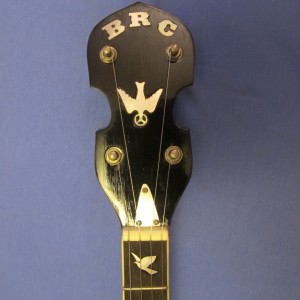 These hybrids are comprised of a new stock neck with signature MOP inlays and a vintage pot preferably 50 to 90 years old to provide a seasoned wooden tone.
These hybrids are comprised of a new stock neck with signature MOP inlays and a vintage pot preferably 50 to 90 years old to provide a seasoned wooden tone.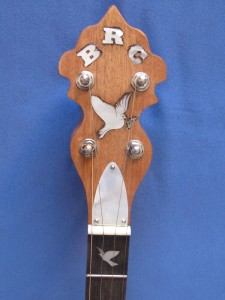
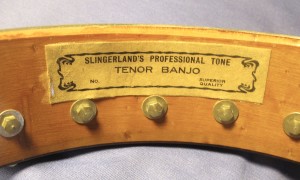 A lost art form in woodworking, the Slingerlands banjo rims were made of a single piece of wood that was steamed and rolled into circular pot with an overlapping junction (note the pointers tracing the bird`s-eye maple seam).
A lost art form in woodworking, the Slingerlands banjo rims were made of a single piece of wood that was steamed and rolled into circular pot with an overlapping junction (note the pointers tracing the bird`s-eye maple seam).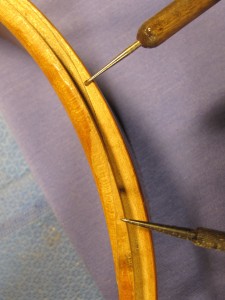
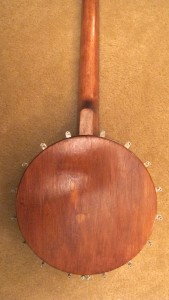 The Clarophone pot had a non removable resonator, and sound portholes were stationed around the rim.
The Clarophone pot had a non removable resonator, and sound portholes were stationed around the rim.